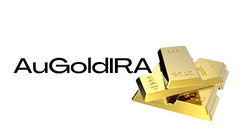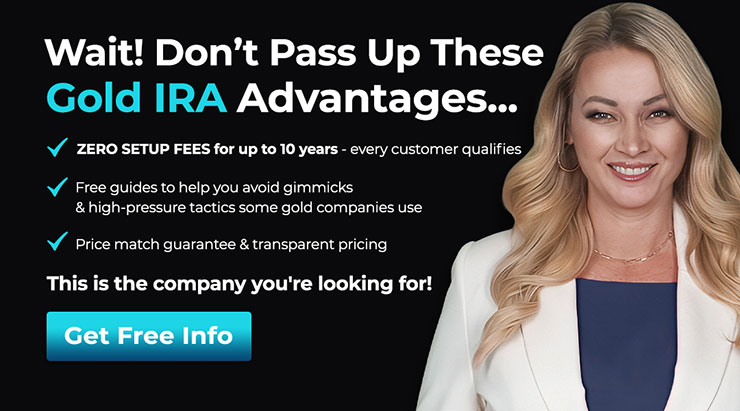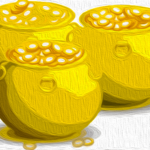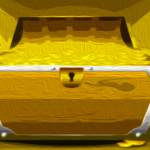
Hey there, crypto enthusiasts! Ready to dive into the murky waters of Know-Your-Customer (KYC) and how it's silently shaping the future of financial control? Buckle up for some eye-opening insights!
The KYC Reality Check
The Intrusion of KYC
Forget the dramatic entrances; KYC has snuck in through the back door, disguised as a harmless checkbox and a Terms of Service agreement. It's not a looming threat; it's already tightening its grip on your financial autonomy.
So, you think you're just handing over your ID to buy some sats? Think again. You're unwittingly funding your own cage in the name of compliance.
The True Face of KYC
While KYC parades as a shield against illicit activities, the real deal is traceability, not safety. Once your identity mingles with Bitcoin through an exchange, every move you make becomes a digital footprint. Big Brother is watching, and he's keeping tabs on it all.
Ever wondered why they nabbed mixer developers instead of the real crooks? KYC completes the surveillance puzzle, making it a one-stop-shop for silent blacklists and frozen assets.
The KYC Conundrum
The Centralization Agenda
No need to ban Bitcoin outright; just track its users. Centralized exchanges and KYC records turn your crypto activities into a neatly wrapped package for regulators. It's not about preventing crime; it's about stifling dissent before it even surfaces.
The Honeypot Effect
Seems harmless, right? Just a few forms, a verification call, and you're in. Wrong. KYC spreads like a virus, contaminating every wallet it touches. You're not just stacking sats; you're leaving a breadcrumb trail for prying eyes.
The Countdown to Exit
Picture this: the calm before the storm. We're on the brink of a crackdown, where surveillance becomes the new normal, privacy a taboo, and autonomy a crime. The trap is set, and most users walked right into it for the sake of convenience.
- Normalizing surveillance
- Demonizing privacy
- Criminalizing autonomy
Real privacy demands more than a quick fix. It requires conscious choices, like peer-to-peer transactions, mining for clean wallets, and steering clear of platforms that trade speed for obedience. It's about taking ownership, not seeking permission.
The Quest for True Freedom
The Parting Message
Remember, Bitcoin was never meant to play by the rules. It's your ticket to freedom. But as KYC tightens its grip, that exit route risks becoming a regulated pathway. Don't let every sat you own be a ticking time bomb of surveillance.
Ask yourself: What does true ownership entail? If it starts with a government ID, you're already on the losing end. No compromises. No delays. Take charge while you still can.
Frequently Asked Questions
Should You Open a Precious Metal IRA?
It all depends on your investment goals and risk tolerance.
Register now if you want to save money for retirement.
It is likely that precious metals will appreciate over the long-term. You also get diversification benefits.
Additionally, silver and gold prices tend to move in tandem. This makes them better choices when you want to invest in both assets.
If you're not planning on using your money for retirement or don't want to take any risks, you probably shouldn't invest in precious metal IRAs.
Which is stronger, 14k or sterling gold?
While gold and silver are both strong metals but sterling silver is less expensive than silver because it contains 92% pure Silver rather than 24%.
Sterling silver is also known as fine silver because it is made from a mixture of silver and other metals such as copper and zinc.
Gold is generally considered to be very strong. It takes great pressure to break it apart. If you were to drop an object on top of a piece of gold, it would shatter into thousands of pieces instead of breaking into two halves.
However, silver isn't as strong and durable as gold. If you dropped an item onto a sheet of silver, it would probably bend and fold without shattering.
It is commonly used in coins and jewelry. Therefore, its value tends to fluctuate based on supply and demand.
What are the best ways to choose an IRA.
The first step to finding an IRA for you is understanding your account type. This includes whether your goal is to open a Roth IRA (or a traditional IRA). You will also need to know how much you can invest.
Next is deciding which provider best suits your needs. Some providers offer both accounts and others only specialize in one.
You should also consider the fees associated each option. Fees may vary from one provider to another and could include annual maintenance fees as well. Some providers charge a monthly cost based on how many shares you own. Some providers charge only once a quarter.
What is the best way to make money with a gold IRA?
Yes, but it's not as simple as you think. It all depends upon how much risk you are willing and able to take. If you can afford to invest $10,000 every year for 20-years, you could possibly have $1,000,000 by retirement age. If you try to put all your eggs into one basket, you will lose everything.
Diversifying your investments is important. Gold does well when there is inflation. You want to invest in an investment asset that rises with inflation. Stocks excel at this because they rise with increased profits. This is also true with bonds. They pay interest each year. They're very useful during periods of economic growth.
What happens when inflation is absent? In deflationary periods stocks and bonds both fall in value. Investors should not put all of their savings in one investment such as a stock mutual fund or bond.
They should instead invest in a combination of different types of funds. They could invest in stocks or bonds. Or, they could invest in both bonds and cash.
They are exposed to both sides of a coin. They can see both the inflation and the deflation sides of the coin. And they will still see a return over time.
Which precious metals are best to invest in retirement?
Knowing what you have saved so far and where you plan to save money in the future is the first step towards retirement planning. Start by listing everything you have. This includes all savings accounts and stocks, bonds or mutual funds. It also should include certificates of Deposit (CDs), life insurance policies. Annuities, 401k plans, real-estate investments, and other assets like precious metals. You can then add up all these items to determine the amount of investment you have.
If you are between 59 and 59 1/2 years, you might consider opening a Roth IRA. While a Roth IRA does not allow you to deduct contributions from taxable income, a traditional IRA allows for that. You won't be allowed to deduct tax for future earnings.
You may need additional money if you decide you want more. You can start with a regular brokerage account.
Statistics
- Same tax rules as traditional IRA SEP IRA contributions in 2022 are limited to 25% of compensation or $66,000, whichever is less Before setting up a Silver IRA, understand the fees and IRS restrictions. (sltrib.com)
- You can only purchase gold bars of at least 99.5% purity. (forbes.com)
- Silver must be 99.9% pure • (forbes.com)
- The maximum yearly contribution to an individual's IRAs is currently $6,000 ($7,000 for those 50 years or older), or 100% of earned income, whichever is less. (monex.com)
External Links
regalassets.com
investopedia.com
kitco.com
en.wikipedia.org
How To
How to decide if a Gold IRA is right for you
Individual Retirement accounts (IRAs) are the most common type of retirement account. IRAs can also be purchased through banks, mutual funds, financial planners, and other institutions. The IRS allows individuals to contribute up to $5,000 annually without tax consequences. This amount can be deposited into any IRA, regardless your age. However, certain IRAs have limits on the amount you can deposit. For example, if your age is less than 591/2 years old, you can't contribute to a Roth IRA. If you're under 50, you must wait until you reach age 70 1/2 before making contributions. Some people may also be eligible for matching contributions if they work for their employer.
There are two types: Roth and Traditional IRAs. Traditional IRAs allow you to invest in stocks, bonds and other investments. A Roth IRA allows you to only invest in after-tax dollars. Roth IRA contributions don't get taxed as soon as they are made. However, withdrawals from a Roth IRA will be taxed again. Some people may choose to use both. There are pros and cons to each type of IRA. How do you choose the best type of IRA for you? Three things to bear in mind before you decide which type of IRA is best for you:
Traditional IRA Pros:
- The company can choose from different contribution options
- Employer match possible
- You can save up to $5,000 per person
- Tax-deferred growth until withdrawal
- Income level may be a factor in some restrictions
- Maximum contribution limit for married couples is $5500 annually ($6,500 jointly).
- Minimum investment is $1,000
- You must start receiving mandatory distributions after age 70 1/2
- For an IRA to be opened, you must have at least five-years-old
- Cannot transfer assets from IRAs
Roth IRA pros
- Contributions are tax-free
- Earnings increase without tax
- No minimum distributions
- Stocks, bonds, and mutual fund investments are the only options.
- No maximum contribution limit
- There are no restrictions on the transfer of assets between IRAs
- Open an IRA if you are 55 years or older
It is important to understand that not all companies offer the exact same IRAs when opening a new IRA. Some companies provide the choice of a Roth IRA as well as a traditional IRA. Others offer the possibility to combine them. You should also note that different types of IRAs may have different requirements. Roth IRAs have no minimum investment requirements, while traditional IRAs require a minimum $1,000 investment.
The bottom line
It is important to decide whether you want taxes now or later when you choose an IRA. A traditional IRA may be the right choice if you retire within ten years. Otherwise, a Roth IRA could be a better fit for you. In either case, it's a smart idea to speak with a professional about your retirement plans. An expert can advise you on the best options and how to navigate the market.
—————————————————————————————————————————————————————————————-
Based on [POSTTITLE]
by [POSTAUTHOR]


















